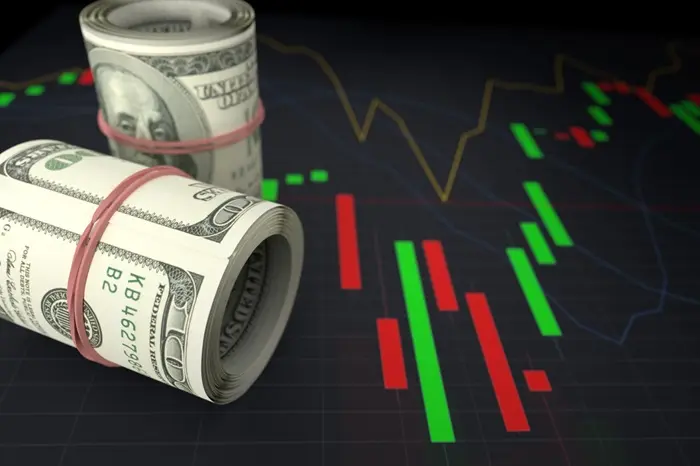Stocks go up and down every day. This movement can confuse new investors. Some days, stocks rise sharply. Other days, they fall without clear reasons. Understanding why stocks move is important for investors. Many factors influence stock prices. Some factors relate to the company itself. Others depend on the economy or investor behavior.
This essay explains the reasons behind stock price movements. It covers company performance, economic conditions, market psychology, and external events. Each factor plays a role in pushing prices higher or lower. By the end, you will have a clear understanding of stock market fluctuations.
Company Performance
One major reason stocks move is company performance. If a company makes more money, its stock often rises. If profits fall, the stock may drop. Investors care about earnings because they show how well a business is doing.
Strong sales growth can push a stock higher. When a company sells more products, it earns more revenue. Higher revenue often leads to higher profits. Investors like profitable companies and buy their stocks. This demand increases the stock price.
Bad news can hurt a stock. If a company loses money, investors may sell. Falling sales or rising costs can reduce profits. When profits decline, the stock price often follows.
Management decisions also affect stock prices. A good CEO can boost investor confidence. Poor leadership may cause investors to sell. Mergers, acquisitions, and new product launches can move stock prices.
Economic Conditions
The economy plays a big role in stock prices. When the economy grows, stocks tend to rise. When it slows, stocks may fall. Investors watch economic indicators closely.
Interest rates influence stock prices. Low rates make borrowing cheaper. Companies can expand and invest more. Consumers spend more when loans are affordable. This helps businesses grow, lifting stock prices. High interest rates can hurt stocks. Borrowing becomes expensive, slowing business growth.
Inflation is another key factor. Mild inflation is normal. Too much inflation hurts purchasing power. If prices rise too fast, consumers buy less. Companies struggle to maintain profits, and stocks may drop.
Unemployment rates matter too. Low unemployment means more people have jobs. They spend more, boosting company profits. High unemployment reduces spending, hurting stocks.
Market Psychology
Investor emotions drive stock prices. Fear and greed can cause big swings. When investors are optimistic, they buy more stocks. This pushes prices higher. When they panic, they sell, causing prices to drop.
Bull markets happen when prices rise for a long time. Investors feel confident and keep buying. This can create bubbles where prices rise too fast. Eventually, the bubble bursts, and prices crash.
Bear markets occur when prices fall for a long time. Fear spreads, and investors sell quickly. This can lead to steep declines. Even strong companies may see their stocks drop.
Herd behavior is common in markets. Investors follow the crowd instead of analyzing facts. If everyone buys a stock, others join in, pushing prices up. If everyone sells, panic spreads, and prices fall.
External Events
Unexpected events can move markets. Natural disasters, wars, and political changes affect stocks. These events create uncertainty, making investors nervous.
Political decisions impact stocks. Tax cuts may boost company profits, lifting stock prices. Trade wars can hurt businesses that rely on exports. Investors react quickly to government policies.
Global events also matter. A crisis in one country can affect markets worldwide. For example, a war in an oil-producing region can raise oil prices. This increases costs for many companies, hurting stocks.
Pandemics disrupt economies. The COVID-19 crisis caused a sharp market drop in 2020. Many businesses closed, and unemployment rose. Stocks fell before recovering with government stimulus.
Supply and Demand
Stock prices follow supply and demand. If more people want to buy a stock, its price rises. If more want to sell, the price falls.
Limited supply can push prices up. If few shares are available, buyers compete, raising prices. New stock offerings increase supply, which may lower prices.
High demand comes from positive news. Strong earnings or new products attract buyers. Low demand happens when bad news scares investors.
Big investors like mutual funds move prices. If they buy a stock in large quantities, the price rises. If they sell big blocks of shares, the price falls.
Market Speculation
Some traders buy stocks hoping for quick profits. They do not care about long-term value. This speculation can cause sharp price swings.
Short-term traders focus on price movements. They buy stocks they think will rise soon. If many traders buy, the price jumps. When they sell, it drops just as fast.
Rumors and hype can inflate stock prices. Social media can spread false news, causing irrational buying. When the truth comes out, prices may crash.
Short selling can push prices down. Traders borrow shares and sell them, hoping to buy back later at a lower price. If many do this, the stock falls.
Interest Rates and Bonds
Interest rates affect stock demand. When rates are low, bonds offer weak returns. Investors prefer stocks for higher gains. This increases stock demand, lifting prices.
When rates rise, bonds become more attractive. Investors may shift money from stocks to bonds. This reduces stock demand, lowering prices.
The Federal Reserve influences rates. If the Fed raises rates to fight inflation, stocks may drop. If it cuts rates to stimulate the economy, stocks may rise.
Currency Movements
Exchange rates impact multinational companies. A strong dollar makes exports more expensive. This can hurt sales and profits, lowering stock prices.
A weak dollar helps exporters. Their products become cheaper abroad, boosting sales. This can lift stock prices.
Investors watch currency trends. Sudden shifts can signal economic changes, affecting stock markets.
Industry Trends
Some industries grow faster than others. Stocks in booming sectors often rise. Declining industries see falling stock prices.
Technology stocks can surge with innovation. New gadgets or software attract investors. If a tech company falls behind, its stock may drop.
Oil stocks depend on energy prices. When oil prices rise, energy stocks gain. When oil crashes, these stocks suffer.
Regulations can help or hurt industries. Tighter rules may increase costs, lowering profits. Favorable policies can boost stocks.
Conclusion
Stocks go up and down for many reasons. Company performance is a major factor. Strong earnings lift prices, while weak results drag them down. Economic conditions like interest rates and inflation play a big role. Investor psychology drives market swings, with fear and greed causing big moves. External events such as politics and global crises create uncertainty. Supply and demand determine short-term price movements.
Understanding these factors helps investors make better decisions. While no one can predict every market move, knowing the reasons behind price changes reduces surprises. Smart investors stay informed and focus on long-term growth rather than daily fluctuations. The stock market will always have ups and downs, but knowledge and patience lead to success.
Related topics:



































